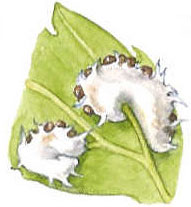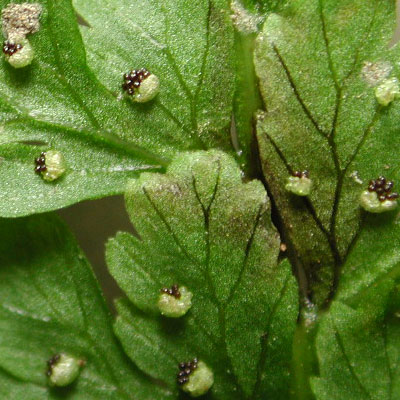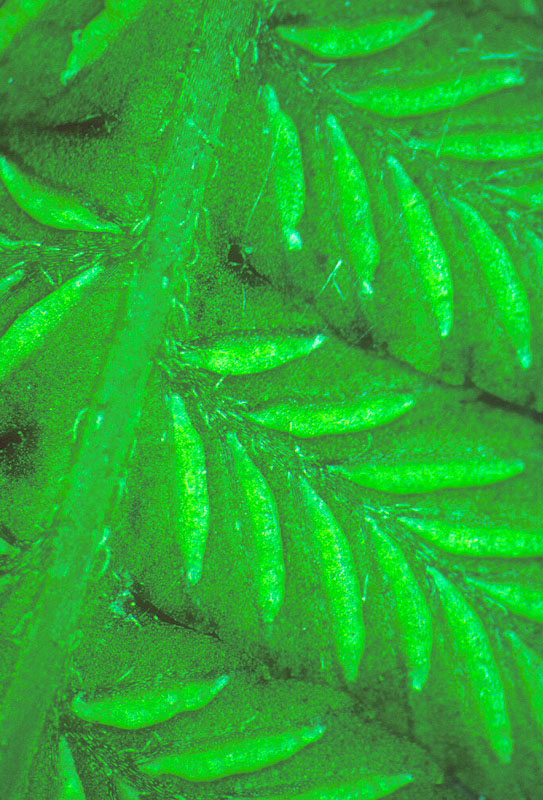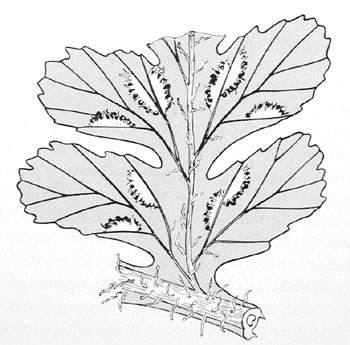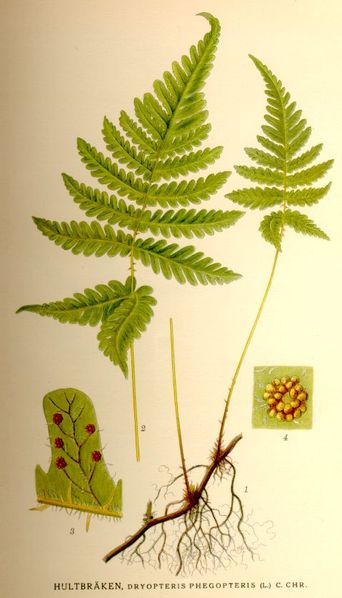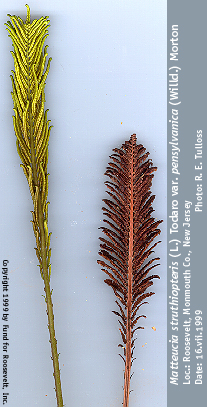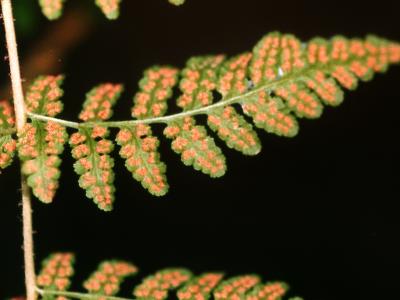|
Hardy Fern Home All Ferns Fern Families ��Aspleniaceae ��Blechnaceae ��Dennstaedtiaceae ��Dryopteridaceae ��Lygodiaceae ��Osmundaceae ��Polypodiaceae ��Pteridaceae ��Thelypteridaceae ��Woodsiaceae Fern Genera ��Adiantum ��Arachniodes ��Aspidotis ��Asplenium ��Astrolepis ��Athyrium ��Blechnum ��Cheilanthes ��Cryptogramma ��Cyrtomium ��Cystopteris ��Dennstaedtia ��Deparia ��Diplazium ��Dryopteris ��Gymnocarpium ��Lygodium ��Matteuccia ��Onoclea ��Oreopteris ��Osmunda ��Pellaea ��Phegopteris ��Pleopeltis ��Polypodium ��Polystichum ��Pteridium ��Pteris ��Pyrrosia ��Thelypteris ��Woodsia ��Woodwardia |
| Woodsiaceae | ||
|
Synonym Athyriaceae; all here are herbaceous, soft-leaved, deciduous, having two ribbon or lunate vascular strands in the petiole base, blackish-shaded bases to the stipes, but there are still substantial differences, a most diverse group, and not a very useful family circumscription for gardeners or horticulturalists. Here 8
genera. | ||
| Athyrium | ||
Lady fern | ||
|
Etymology
Greek: From athyrium meaning a small door. The indusium is hinged on one side.
Description
Rhizome: short-creeping or erect.
Frond: deciduous, monomorphic. Stipe: deeply grooved above, swollen at base, scaly, vascular bundles: 2, lunate, uniting to a U-shape above. Blade: 2-pinnate-pinnatifid, linear to bradly triangular, herbaceous, below: absent or of linear to lanceolate scales or 1-celled glands. costae V-grooved above, continuous from rachis to costae, segments serrate or crenate, veins veins free, simple or forked. Sori: linear or oblong or j-shaped (round), in 1 row between midrib and margin, indusium: shape of sori (absent), sinus, sporangia: brownish.
Distinctive Characteristics
Dichotomous keys are unsuccessful in keying out this genus, i.e., it is poorly circumscribed. In the main it is closest to Deparia and Diplazium, sharing with them 2 vascular bundles and rachis/costa grooves on the upper side. These two genera and most Athyrium have elongate sori. It is separated from Deparia by deeper grooves and continuity from rachis to costa vs. discontinuous in Deparia, and from Diplazium on even skimpier grounds.
|
|
|
| Cystopteris | ||
Bladder fern | ||
|
Etymology
Greek: kystos, bladder + pteron, wing, which describes the pinnae. Note that the ancient Greeks used pteris to describe all ferns. The indusium looks like an inflated bladder.
Description
Rhizome: short- to long-creeping, scaly.
Frond: deciduous, the stipe bases persistent, storing starch, monomorphic. Stipe: grooved, hairy or glabrous, vascular bundles: 2, round or oblong. Blade: 1-3 pinnate-pinnatifid, ovate-lanceolate to deltate, membranaceous to herbaceous, absent or of uniseriate, multicellular hairs in pinnae axils or of unicellular, gland-tipped hairs below. Pinnae: anadromous, costae grooves above continuous from rachis to costae, segments serrate-dentate, veins free, simple or forked, ending at the margin. Sori: round, in 1 row between midrib and margin, indusium: young: hood-shaped, often falling at maturity, beneath sorus on midrib side, sporangia: brown. |
|
|
| Deparia | ||
|
Etymology
The word Deparia comes from the Greek depas, which is a cup or a beaker, and is thought to have described the shape of the indusium.
Description
Rhizome: short-creeping, scaly.
Frond: deciduous, trophopod, monomorphic. Stipe: green, shallowly grooved above, swollen or not at base, scales at base light brown, linear-lanceolate, vascular bundles: 2, lunate. Blade: 1-pinnate-pinnatifid, elliptic to ovate-lanceolate, herbaceous, multi-cellular hairs along costae. Pinnae: anadromous, costae grooved above, not continuous from rachis to costae, segments entire, crenulate, or serrate, veins free. Sori: elongate, � straight, or hooked at distal end, on veins, indusium: linear, persistent, sinus, sporangia: brownish.
Distinctive Characteristics
Distinguished from Athyrium and Diplazium by discontinuity in the grooves from the rachis to the costae. The linear sori are very similar to Diplazium, but are never back-to-back along a vein.
|
|
|
| Diplazium | ||
Twin-sorus fern | ||
|
Etymology
From the Greek diplazios which means double, because indusia lie on both sides of the vein.
Description
Rhizome: creeping to erect, scaly.
Frond: deciduous or evergreen, trophopod, monomorphic or weakly dimorphic. Stipe: green, deeply grooved above, swollen or not at base, scaly or glabrous, vascular bundles: 2, lunate. Blade: 1-2 pinnate (entire), oblong-lanceolate to deltate, herbaceous to papery. costae U-grooved above, continuous from rachis to costae, segments entire, crenulate, or serrate, veins free or netted. Sori: linear, basal sori paired back-to-back on the same vein, indusium: linear, persistent, sinus, sporangia: brownish.
Distinctive Characteristics
Diplazium is very close to Athyrium, but the sori never hook over the veins, and are sometimes paired back-to-back. Additionally, the grooves in the rachis are U-shaped vs. V-shaped in Athyrium. Differs from Deparia in having the grooves continuous from costa to rachis.
|
|
|
| Gymnocarpium | ||
Oak fern | ||
|
Etymology
From the Greek, gymnos, naked + karpos, fruit, because there are no indusia covering the sori.
Description
Rhizome: long-creeping, glabrous.
Frond: deciduous, monomorphic. Stipe: grooved, glabrous, vascular bundles: 2, oblong. Blade: pinnatifid to 3-pinnate-pinnatifid, triangular to pentagonal, herbaceous, absent. Pinnae: pinnules on lower side longer than those on upper side, costae grooved above, not continuous from rachis to costae, segments entire or crenate, veins free, simple or forked. Sori: round, in 1 row between midrib and margin, indusium: absent, sporangia: brownish.
Distinctive Characteristics
small fern, long-creeping, black rhizome, stipe vertical and blade horizontal, forms a loose colony
|
|
|
| Matteuccia | ||
Ostrich fern | ||
|
Etymology
Named after Carlo Matteucci (1811-1863), a physicist at the University of Florence, Italy and later a politician.
Description
Rhizome: erect, forming a vase-like plant, leaf-scales on the runners.
Frond: deciduous, dimorphic. Stipe: green, expanded base (trophopod), white hairs, vascular bundles: 2, lunate. Blade: sterile: 1-pinnate-pinnatifid, elliptic, sterile: herbaceous, absent or deciduously hairy below. Pinnae: proximal pinnae (several pairs) greatly reduced, sessile, costae shallowly grooved above, grooves not continuous from rachis to costae, segments entire, veins free. Sori: round, covered by revolute margins, indusium: vestigial, sporangia: green.
Distinctive Characteristics
The vase shape on a large plant and the ostrich feather outline of the sterile blade are enough to spot this. The persistent -- into the next year -- fertile fronds, when produced, are confirmatory. Older habitats are always composed of multiple plants produced stoloniferously.
|
|
|
| Onoclea | ||
Sensitive fern | ||
|
Etymology
Greek: Onoclea comes from onos which means a vessel + kleio, to close. It refers to the rolled up bead-like segments which enclose the sori. It was also an ancient Greek name for another, different, plant, most likely a borage.
Description
Rhizome: long-creeping, scales.
Frond: sterile deciduous; fertile persistent; trophopod, dimorphic. vascular bundles: 2, lunate. Blade: sterile blades, pinnatifid to 1-pinnate at base, deltate, herbaceous to papery, linear to lanceolate scales and/or multicellular hairs. Pinnae: lowest pinnae largest or nearly so, sessile or adnate, costae flat above, segments entire to sinuate, veins sterile: netted, fertile:free. Sori: round, covered by revolute margins, indusium: vestigial, sporangia: green.
Distinctive Characteristics
the beaded fertile frond, the pinnatifid sterile fronds, and the long-creeping, subterranean rhizome.
|
|
|
| Woodsia | ||
Cliff fern | ||
|
Etymology
Named for Joseph Woods, 1776-1864, an English botanical author.
Description
Rhizome: creeping to erect, scales.
Frond: deciduous, monomorphic. Stipe: persistent base, vascular bundles: 2, round or oblong. Blade: 1-2 pinnate-pinnatifid, linear to ovate, herbaceous, hairs on both surfaces, rarely absent. Pinnae: lowest somewhat reduced, sessile or nearly so, pinnules mostly opposite, costae grooved above, grooves continuous from rachis to costae, segments entire to dentate, veins free, simple or forked, ending before the margin. Sori: round, in 1 row between midrib and margin, indusium: cup-like or dissected into several filamentous or scalelike segments encircling sorus, persistent but often obscure, basal, surrounding, sporangia: brownish. |
|
|
